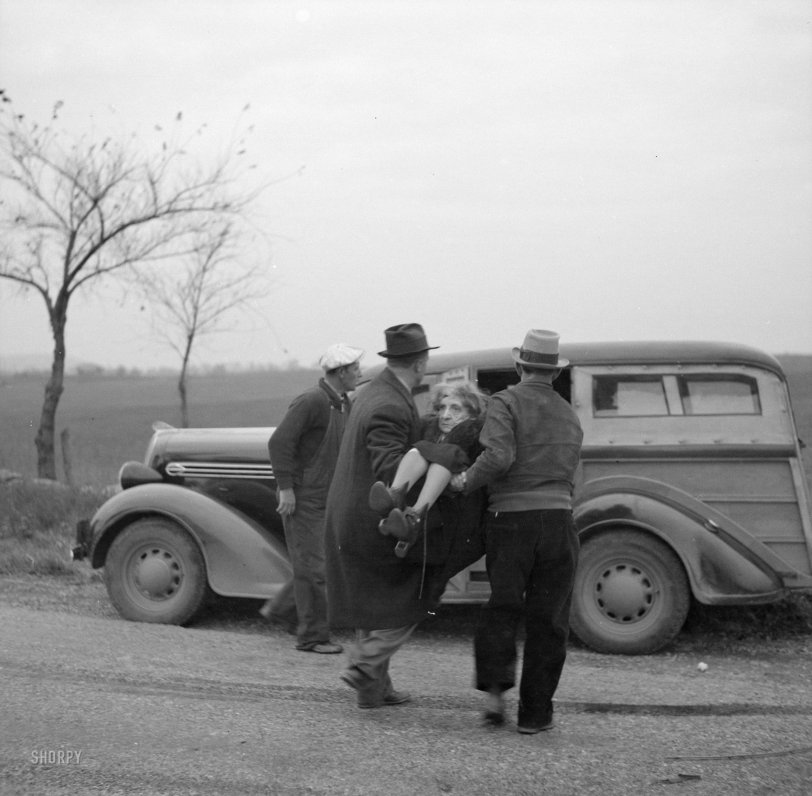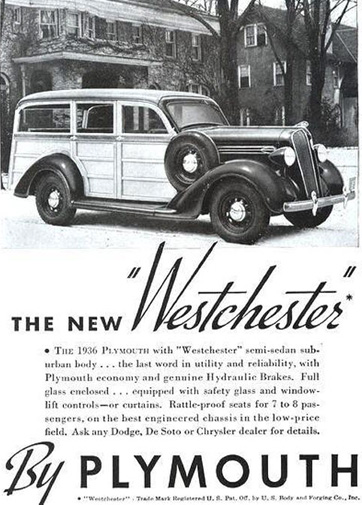


Framed or unframed, desk size to sofa size, printed by us in Arizona and Alabama since 2007. Explore now.
Shorpy is funded by you. Patreon contributors get an ad-free experience.
Learn more.

- Baldwin 62303
- Baldwin VO-1000
- Cold
- No expense spared
- Tough Guys
- Lost in Toyland
- And without gloves
- If I were a blindfolded time traveler
- Smoke Consumer Also Cooks
- Oh that stove!
- Possibly still there?
- What?!?
- $100 Reward
- Freeze Frame
- Texas Flyer wanted
- Just a Year Too Soon
- WWII -- Replacing men with women at the railroad crossing.
- Yes, Icing
- You kids drive me nuts!
- NOT An Easy Job
- I wonder
- Just add window boxes
- Icing Platform?
- Indiana Harbor Belt abides
- Freezing haze
- Corrections (for those who care)
- C&NW at Nelson
- Fallen Flags
- A dangerous job made worse
- Water Stop
Print Emporium
Survivor: 1936

November 1936. "Automobile accident on U.S. 40 between Hagerstown and Cumberland, Maryland." Crash Reconstruction, Part 3, and the last shot in this mini-series snapped by Arthur Rothstein. View full size.
Shoes
Very interesting design for a woman her age.
No windows
Note the absence of glass in the side openings, just snap-in "side curtains."
In those days, "station wagons" were just that, commercial vehicles sold for carrying passengers and their luggage between hotel and railroad station. The wooden bodies were heavy and expensive to maintain. Most station wagons had heavy-duty, no-frills upholstery and few of the amenities common in cars sold for personal use.
Rare Ambulance
The "ambulance" is a 1936 Plymouth wagon. Only 309 produced. Very few, if any, survive. Much, much rarer than the '36 Fords involved in the accident (about 20,000 Standard tudors produced, and about 30,000 DeLuxe 5-window coupes made in '36).
Let's just chuck her in the back of my station wagon Joe.
No Paramedics, no Gurney, No Ambulance a.k.a. the good old days.
At least it didn't cost much.
Rattle-Proof Seats!
The station wagon is a 1936 Plymouth Westchester.
Just when you thought technology had advanced as far as possible, Plymouth came through with the breakthrough of the century! Only in the 1936 Plymouth Westchester could you possibly obtain an innovation like "Rattle-proof seats!" I wonder why Cadillac or Rolls-Royce didn't come up with this astounding miracle.
This has to be one of the very few Plymouth Westchesters that is equipped with curtains instead of glass. The ad below clearly states that curtains were available instead of glass. It seems odd that an enclosed car would have this option, but perhaps the feature allowed odd-sized cargo and other specialty uses. Not the best feature for wintertime though.

A reconstruction?
Makes me wonder if this was just an opportune moment for a photographer or a truly major crash with fatalities. Why would they reenact if it weren't the latter?
["Reconstruction" refers to the photos being published here in the order the depicted events occurred. - tterrace]
Ah, my bad. Thanks.
























On Shorpy:
Today’s Top 5